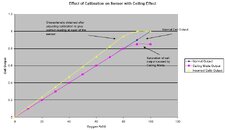assuming only 32% was being added by mistake then the worst case would be a full 32% O2 the MOD for this is 132 (1.6PPO2) for sport divers this would not be a problem and their computers would be set to air so also not a problem. I see no reason to check an air tank for O2. I am Nx cert so if there is Nx available I am diving it and would be checking anyway. no reason to scare the Air divers on a liveaboard or resort that has Nx into thinking they need to check for O2.
Edit:LOL we were posting the same thing at the same time.
Edit:LOL we were posting the same thing at the same time.




